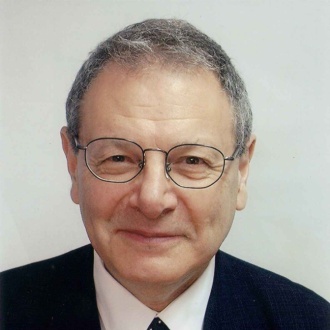Fortuitous Beginnings
Our Parsha begins with the many restrictions placed upon Kohanim, the priestly class.
They are forbidden, with rare exceptions, to attend funerals lest they become ritually impure. They are restricted in whom they may marry. They are forbidden to shave or to mutilate themselves. This is because they have an exalted status of purity and are required not only to cherish their purity, but also to guard it. (1)
One would imagine that young children in the priestly families would be gradually introduced to this exalted but rigorous way of life. It would be understandable if parents would want to shield their children from this demanding ethic in their delicate early years. Yet the Torah permits no such thing.
The Torah introduces these strictures with the words, “Talk to the Kohanim, children of Aron, and talk to them.” Biblical commentators understood the repetition of the words “talk to them,” as a commandment to educate the youth. (2) In other words, talk to the elders so that they may talk to (or educate) their children.
Supreme Confidence
With this instruction, the Torah not only obligates the parents, but also demonstrates supreme confidence in the youth. To expect children to understand the fine nuance of higher devotion and to accept the burdens that make this devotion possible is to estimate their maturity highly and to respect their capacity for nuance. (3)
In Every Jew
Though this instruction is directed to the youth of the priestly families it was also incorporated into the Torah which was given to the entire nation. This indicates that the teaching inherent in this instruction and the confidence displayed therein are also directed to the entire nation.
There are adults, who are mature in age, but are still children in matters of Torah. Such people may be skilled and sophisticated in other areas, but are underdeveloped in religious instruction. They may not have been exposed to Torah in their youth and never learned to embrace its way of life. These children are also addressed in this verse.
By obligating all Jews to be personally active in the religious education of these “children” the Torah proclaims its confidence in the ability of every Jew to absorb its teachings and to be inspired by them.
Why does G-d believe that the priestly youth, and by extension of every Jewish child, has the potential for such exalted devotion and inspiration? What inspires his confidence?
The answer lies in the matzah that our ancestors ate when they left Egypt.
In Haste
During and after their exodus from Egypt our ancestors ate unleavened bread. The Torah tells us that our ancestors tried to bake bread, but because they left in haste, they did not have time to let the dough rise. This curious statement seems to belie the facts. (4)

demonstrating confidence
Our ancestors had ample time to bake their bread before they left Egypt. (5) Furthermore, they could have carried their dough with them as they left Egypt and baked their bread when they first camped. That would have provided ample time for the dough to rise.
Humble Bread
They kneaded this dough on the night of their exodus. This was the night that G-d descended from heaven and appeared in Egypt to free them from slavery.
It is our nature to feel small and insignificant when we chance upon true greatness. When we meet a person of great stature we might feel overwhelmed. When our ancestors glimpsed G-d’s very essence, the most exalted level of divine revelation, they naturally responded with supreme humility.
However because this reaction was stimulated by the creator of heaven and earth it’s experience was not limited to mankind. It was experienced by the whole of creation. (6)
The dough did not rise because nothing rises in the presence of G-d. Just as the ego remains humble in G-d’s presence, so did the dough. (7) It was not a lack of time that prevented it from rising, but the presence of its creator. This is why we declare on the night of Passover that the dough did not manage to rise before the King of Kings, Blessed Be He, revealed himself and freed them. (8)
This matzah, affected by G-d himself, surely left a profound impact on those who ate it. Our ancestors ate sixty-one meals of this matzah and were left awed and humbled. They were suffused with a continuous awareness of the divine omni- presence. They were inspired with passion and devotion; imbued, as they were, with a capacity for the sacred nuance of Torah.
The Fifteenth Day
The exodus from Egypt occurred on the fifteenth day of the Hebrew month, Nissan. Our ancestors ate the unleavened bread for thirty days, until the fifteenth day of the Hebrew month, Iyar. (7) This year, on the fifteenth day of Iyar, we will read the Torah’s instruction to educate our youth and its statement of supreme confidence in them. (9)
The proximity of the date and the Torah reading indicates a connection. Perhaps it was the effect of the matzah that brought our ancesters to the levels of devotion that inspired G-d’s supreme confidence.
Indeed, it works for us too. The matzah that we eat on Passover, along with its inherent meditations and devotions, empower us to climb the ladder of spirituality. The Torah demonstrates its faith in us. All we need to do is make the climb.
To ascend from one rung to the next and to reach euphoric proximity with G-d. (10)
Footnotes:
- Leviticus 21: 1-9.
- Bab Talmud, Yevamos, 114a. See also Rashi’s commentary (R. Shlomo Yitzchaki, Troyes France, 1040-1105) to Leviticus 21: 1-9.
- The Torah uses the Hebrew word emor, which means talk, rather than the more conventional daber, which means speak. The difference between these two words in Hebrew is one of emphasis. The word daber connotes firm presentation. The word emor, connotes soft persuasion.In using the softer connotation the Torah instructs the adults to guide the children gently through the confusing labyrinth of the priestly strictures. It instructs them to persuade and to inspire the children. To help them see this sacred path as a wonderful privilege rather than as a difficult burden.Yet with all the inherent caution that the Torah employs this instruction displays G-d’s tremendous confidence in the young Kohanim.
- Exodus 12: 39.
- Moses informed them of the exodus at least five (if not fifteen) full days before they actually left. (See Exodus 12: 1- 15). In fact they did prepare Matzah to eat before that night, which they are on the eve of their redemption (Exodus 12: 8). Why could they not also prepare dough at that time for their journey?
- Likutei Torah, 12b. See also the Chassidic discourse on Matzah Zu in Siddur Tefilos Mikoll Hashanah. (R. Schneur Zalman of Liadi, founder of Chassidus Chabad, 1745 – 1813).
- Although this represents a radical transformation of the dough’s nature it is not the first incident of such transformation. When G-d split the Sea of Reeds the water stood upright. When G-d gave the Torah all birds and animals were silenced for the duration. It is similarly prophesied that in the Messianic age the “lion shall lie with the lamb.” These transformation are affected by the sudden revelation of G-d’s presence. When the creator appears, all of creation takes note.
- Haggadah of Pesach
- Exodus 15: 1. See Mechilta and Rashi’s Commentary on this verse.
- Though this Torah portion is not chanted every year on this day, the fact that it is often chanted on this day indicates a link.
- This essay is based on a talk given by the Lubavitcher Rebbe (R. Menachem M Schneerson, Rebbe of Lubavitch, NY, 1902-1994) on 15 Iyar 5745.
Tags:
confidence,
education,
humility


























